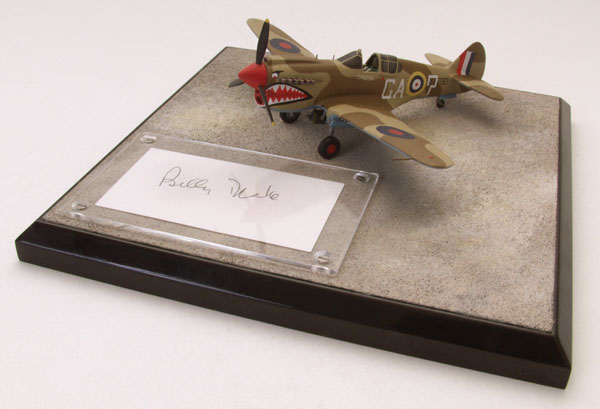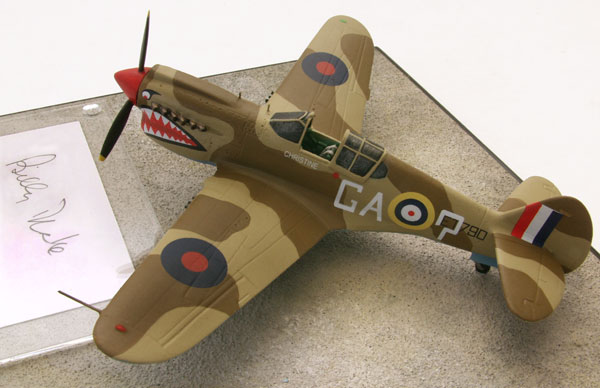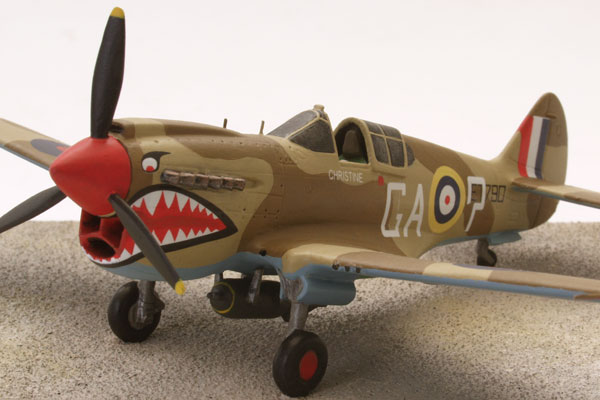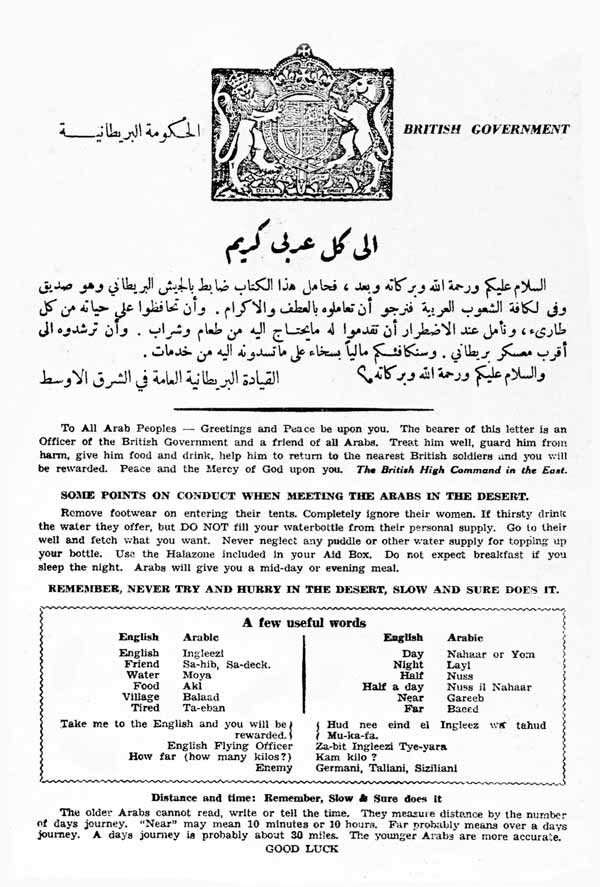Curtiss Kittyhawk Mk IA
Curtiss Kittyhawk Mk IA ET790 GA-? 112 Squadron
Squadron Leader Billy Drake DSO DFC*, LG 91 Egypt, July 1942.
The Curtiss P-40 family is confusing because in different countries the same aircraft often has a different designation. Used by the RAF the P-40D under the lend lease program became known as the Kittyhawk and acheived success in the deserts of North Africa during 1942.
112 Squadron was one of several squadrons to be equiped with the Kittyhawk Mk IA and famously were the first squadron to apply the distinctive sharksmouth to their aircraft in September 1941. Initially flying the earlier P-40 Tomahawk 112 Squadron received its first Kittyhawks in early 1942 when the squadron was under the command of Squadron Leader Clive Caldwell DFC*.
During 1942 the Kittyhawk was the RAF’s main air superiority fighter in the desert not only defeating many enemy aircraft but supporting the 8th Army by bombing enemy armour. The Kittyhawk Mk IA was well suited to this role as it had provision for carrying up to 1000lb of bombs.
Led by Squadron Leader Billy Drake DSO DFC* from May 1942 112 Squadrons Kittyhawk Mk IAs took part in many of the battles for El Alamein. Billy Drake became the RAF’s top scoring ace on the Kittyhawk with 13 victories and 2 shared.
BILLY DRAKE 39095
Drake was born in London on December the 20th 1917. Rejoined the RAF on a short service commission in July 1936. He was posted to 6 FTS, Netheravon on September the 19th and with training completed, he joined No 1 Squadron at Tangmere on May the 22nd 1937.
Drake went to France with the squadron in September 1939 flying Hawker Hurricanes. On April the 20th 1940 he destroyed a Bf 109 and possibly another, on May the 10th a He 111 and on May the 13th he shot down a Do 17 and probably another but was jumped by Bf 110s and shot down. He baled out, wounded, was taken to a French hospital and later flown back to an RAF hospital in England.
He arrived at 6 OTU, Sutton Bridge on June the 20th 1940 for flying instructor duties. Drake returned to operations when he was posted to 213 Squadron at Tangmere on October the 2nd 1940. Three weeks later he joined 421 Flight at Hawkinge, as a Flight Commander.
On December the 7th and 27th Drake shared in the probable destruction of two Do 17s and on January the 7th 1941 he damaged two Ju 88s. He was awarded the DFC (7.1.41). He was posted to 53 OTU, Heston in February, as an instructor. He went overseas in early October to form and command 128 Squadron at Hastings in West Africa. On December the 13th Drake shot down a Vichy French M-167F near Freetown.
Drake went to Air HQ Middle East in April 1942 and was given command of 112 Squadron flying Kittyhawk Mk IAs at Gambut on May the 24th. He claimed a probable Bf 109 on June the 6th, another probable on July the 2nd, destroyed a Bf 109 on the 8th, damaged a Ju 88 on the ground on the 19th, destroyed a Bf 109 on the 24th, two Ju 87s on September the 1st and another Bf 109 on the 13th.
Drake shared a Ju 87 and probably destroyed another on October the 1st 1942, got a probable Bf 109 on the 22nd, destroyed another on the 26th, a Me 202 on the 27th, a Ju 87 on the 31st, a Bf 109 destroyed and another damaged on November the 5th, a Bf 109 destroyed on the ground on the 11th, a He 111 destroyed and a Bf 109 damaged on the 15th, a Bf 110 destroyed and another damaged on the 19th, a Me 202 and a Bf 109 destroyed on December the 11th and he finally shared a Bf 109 on the 13th. Drake was awarded a Bar to the DFC (28.7.42) and the DSO (4.12.42).
In January 1943 he was promoted to Wing Commander and posted to HQ RAF Cairo. He took command of the Spitfire Wing in Malta in June 1943 and before returning to the UK he was credited with another six enemy aircraft destroyed. He received the DFC (US)(22.10.43).
Drake was appointed Wing Leader 20 Wing, Typhoons, in late November 1943 and in May 1944 he was sent to America on special duties. Back in the UK, he was made Deputy Station Commander at Biggin Hill and later went to HQ SHAEF to serve in the Operations Room.
He took part in the first Battle of Britain flypast in September 1945. Drake retired from the RAF on July the 1st 1963, as a Wing Commander, retaining the rank of Group Captain.
APO 7.9.36 PO 13.7.37 FO 13.4.39 FL 3.9.40 SL 1.12.41 SL 1.9.45 WC 1.1.53
Ref: Men of the Battle of Britain by Kenneth G. Wynn (CCB Publications)
Scale 1:72 Wingspan 6.2″ (158 mm)
Base size 7.71″ (196 mm) square (No. 5)
Weight not including base 9 ozs (257 grams)
Limited edition of 50 only
SOLD OUT





